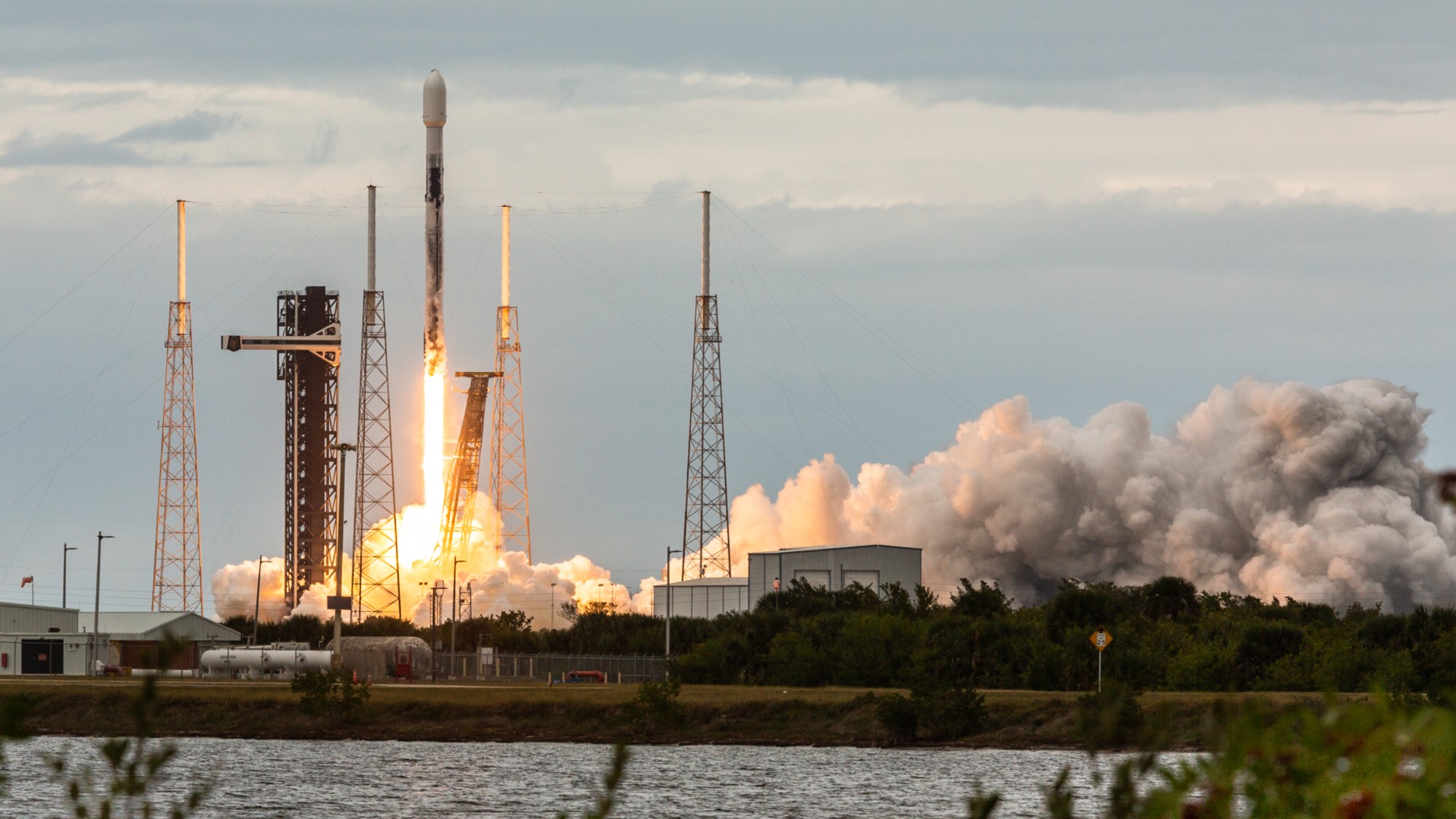Health & Science
Stem cells produce their first cure; How to make fools of men; Blame the potato, not the couch; Building a lunar telescope; Help from a bloodsucker
Stem cells produce their first cure
Stem cells, which can turn into any kind of cell in the body, have been held out as a possible cure for a host of dread diseases. For the first time, says the Los Angeles Times, that promise has been realized in a real patient suffering from an inherited and possibly fatal skin disease. Nate Liao, a 2-year-old from Minneapolis, was born with epidermolysis bullosa, a rare disease caused by the body’s inability to make a key form of collagen, which supports the skin. Nate and his older brother Jake, who also has EB, have skin so delicate that it blisters and falls apart at the slightest touch. Nate and Jake have to wear special clothes and have never eaten solid food; the lining of their esophagus is so fragile that it can only handle liquids. After a plea for help from the boys’ desperate parents, doctors at the University of Minnesota Medical School came up with a plan to give Nate a bone marrow transplant using stem cells harvested from umbilical cord blood. Just a few months later, Nate’s body began making more normal collagen, and his skin is now strong enough for him to wear normal clothes and eat real meals. Nate’s progress has been so encouraging that his parents decided to pursue the treatment for Jake, too. “Nate’s quality of life is forever changed,” says Dr. John Wagner, who performed the transplant. If future treatments are as successful as Nate’s, he says, “maybe we can take one more disorder off the incurable list.’’
How to make fools of men
The Week
Escape your echo chamber. Get the facts behind the news, plus analysis from multiple perspectives.

Sign up for The Week's Free Newsletters
From our morning news briefing to a weekly Good News Newsletter, get the best of The Week delivered directly to your inbox.
From our morning news briefing to a weekly Good News Newsletter, get the best of The Week delivered directly to your inbox.
Just seeing a woman in a bikini so discombobulates men that their judgment is impaired, leading them to make foolish decisions about money, alcohol, and other short-term “rewards,’’ says a new study. Belgian researchers let a group of men fondle women’s bras and shirts and look at photos of women in bikinis. As their sexual arousal climbed, the men became more likely to seek immediate gratification through any means available. In the brain, the same region registers rewards from pleasurable activities such as sex, eating, drinking, and winning money. So when men are sexually stimulated but not rewarded with sex, researchers said, men crave an alternative reward. The findings explain why so many advertisers use photos of sexy women, researcher Bram Van den Bergh tells LiveScience.com. “Being exposed to a sexy girl may influence what stock you invest in or what candy bar you buy.”
Blame the potato, not the couch
As the obesity rate has continued to climb, scientists have launched hundreds of studies to figure out why we’re so fat. But it turns out, the answer isn’t terribly complex: We eat too much. Despite the frequent criticism of modern man’s sedentary lifestyle, an analysis by a team of international researchers has found that most people burn the same number of calories as their parents and grandparents did decades ago. “For average people, the daily physical activity hasn’t changed,” says biologist John Speakman of the University of Aberdeen in the U.K. “In the time we spend watching television today, people probably listened to radio in the 1950s and read books in the 1920s.” What’s really changed, he tells Science, is caloric intake: larger portion sizes, massive fat and sugar intake, and frequent snacking.
Building a lunar telescope
A free daily email with the biggest news stories of the day – and the best features from TheWeek.com
When earthlings establish a base on the moon sometime in this century, they’ll almost certainly want to put a telescope there to take advantage of the airless, nearly perfect viewing conditions. Transporting a large telescope’s reflective mirror from the Earth to the moon would be difficult and expensive, says Discovery News, so NASA is considering a proposal by researcher Peter Chen: Build a telescope at the base, out of moon dust. Chen says that with the addition of a few carbon nanotubes manufactured on Earth and some simple epoxy glue, the crushed rock that makes up moon dust can be formed into a “very hard, very stable material like concrete.” That material can be fashioned into the parabola-shaped base of a mirror, and then coated with a thin layer of reflective aluminum. On the moon, where gravity is one-sixth of that on Earth, telescope mirrors could be made five times larger than the largest now in existence, giving astronomers the ability to directly see planets around distant stars and other eye-popping details not visible through earthbound telescopes.
Help from a bloodsucker
Many zoo animals do not like needles and panic when veterinarians try to take their blood. So zoo officials in Europe are letting a bloodsucking bug get the samples they need. Europe is now experiencing an epidemic of an animal disease called bluetongue, and farmers and zookeepers are rushing to vaccinate their animals. But vaccinations aren’t always effective, so vets have to get regular samples of the animals’ blood to check for antibodies. Many animals respond so badly to the threat of a needle stick that they must be sedated before a doctor enters their pen, but sedation can be dangerous. Instead, zookeepers are introducing the Mexican kissing bug into the cages of the needle-phobic. The bug is known for sucking blood from around the mouth of its sleeping victim (hence the name “kissing’’ bug). After it sucks a few milliliters of an animal’s blood, vets capture the bug. Zoo vet Tim Bouts tells New Scientist that the technique works well, as long as the bugs are careful. “Once a hippo stepped on a full bug so we had to start over.”
-
 A running list of the US government figures Donald Trump has pardoned
A running list of the US government figures Donald Trump has pardonedin depth Clearing the slate for his favorite elected officials
-
 Ski town strikers fight rising cost of living
Ski town strikers fight rising cost of livingThe Explainer Telluride is the latest ski resort experiencing an instructor strike
-
 ‘Space is one of the few areas of bipartisan agreement in Washington’
‘Space is one of the few areas of bipartisan agreement in Washington’Instant Opinion Opinion, comment and editorials of the day